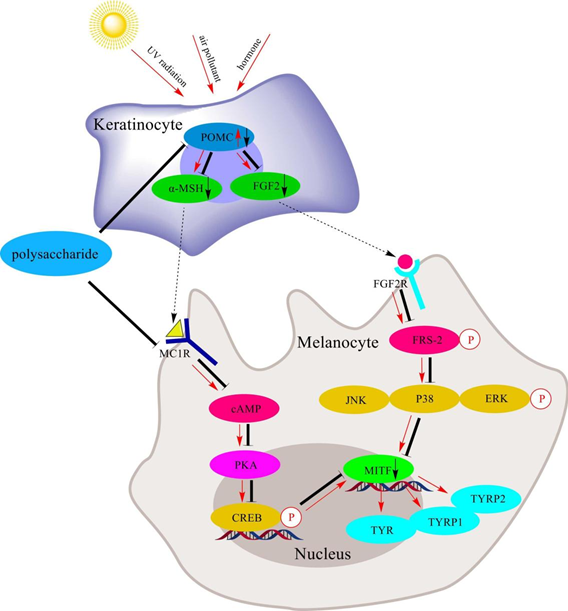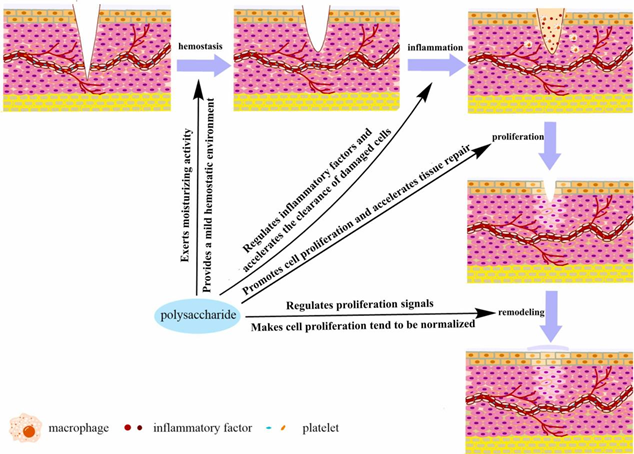Recent advances in application of polysaccharides in cosmetics
已发布 12 四月, 2024
With the increasing application of natural ingredients in the cosmetics industry, the beneficial properties of natural polysaccharides have been effectively harnessed. Certain polysaccharides exhibit superior moisturizing capabilities compared to hyaluronic acid, while others demonstrate whitening effects equivalent to arbutin. As such, the application and development of some polysaccharides are expected to replace some artificial and expensive traditional cosmetics.
In a recent review published in the Journal of Dermatologic Science and Cosmetic Technology, a team of researchers from Inner Mongolia University and The Sorbonne University of France the biological mechanisms underlying the cosmetic properties of polysaccharides, including moisturizing, whitening, anti-aging, and skin repair.
“Due to the complex macromolecular structure of polysaccharides, they often contain multiple active fragments, which can promote various activities through distinct pathways,” says corresponding author Yongmin Zhang. “Factors such as molecular weight, monosaccharide composition and functional groups impact their cosmetic efficacy, with optimal results achieved when these structural parameters are controlled within specific ranges.”
Moreover, the authors noted that the properties of polysaccharides can be fine-tuned by adjusting extraction methods and using polysaccharide modification techniques to enhance their cosmetic activity.
“Currently, the research on the mechanism of activity may not be comprehensive, needing further study on the monosaccharides, functional groups and structural fragments with the highest activity among polysaccharides,” adds Zhang. “Understanding how the highly active polysaccharide binds to the receptor and finally acts on the cell, is important. This knowledge will enable the matching of regulated polysaccharide structures with aesthetic activity detection,”
The authors concluded that by identifying the most effective structural units of polysaccharides in exerting aesthetic activity, the cosmetic efficacy may be maximized, potentially further enhancing the application value of polysaccharides in the cosmetics industry.


Contact author name, affiliation, email address:
Yongmin Zhang, Inner Mongolia University Research Center for Glycochemistry of Characteristic Medicinal Resources, School of Chemistry and Chemical Engineering, Inner Mongolia University, Hohhot 010021, China, yongmin.zhang@upmc.fr
Funder:
The authors acknowledge the “JUN-MA” High-level Talents Program of Inner Mongolia University (No. 21300-5195112, No. 21300-5205107), the funding from the Science & Technology Department of Inner Mongolia Autonomous Region (No. 2021CG0029, No. 15000021T000000020229), and the funding from the Agriculture & Animal Husbandry Department of Inner Mongolia Autonomous Region (No. 21300-5223323).
Conflict of interest:
The authors declare that they have no known competing financial interests or personal relationships that could have appeared to influence the work reported in this paper. Yongmin Zhang is the Co-Editor-in-Chief for Journal of Dermatologic Science and Cosmetic Technology and was not involved in the editorial review or the decision to publish this article.
See the article:
https://doi.org/10.1016/j.jdsct.2024.100004